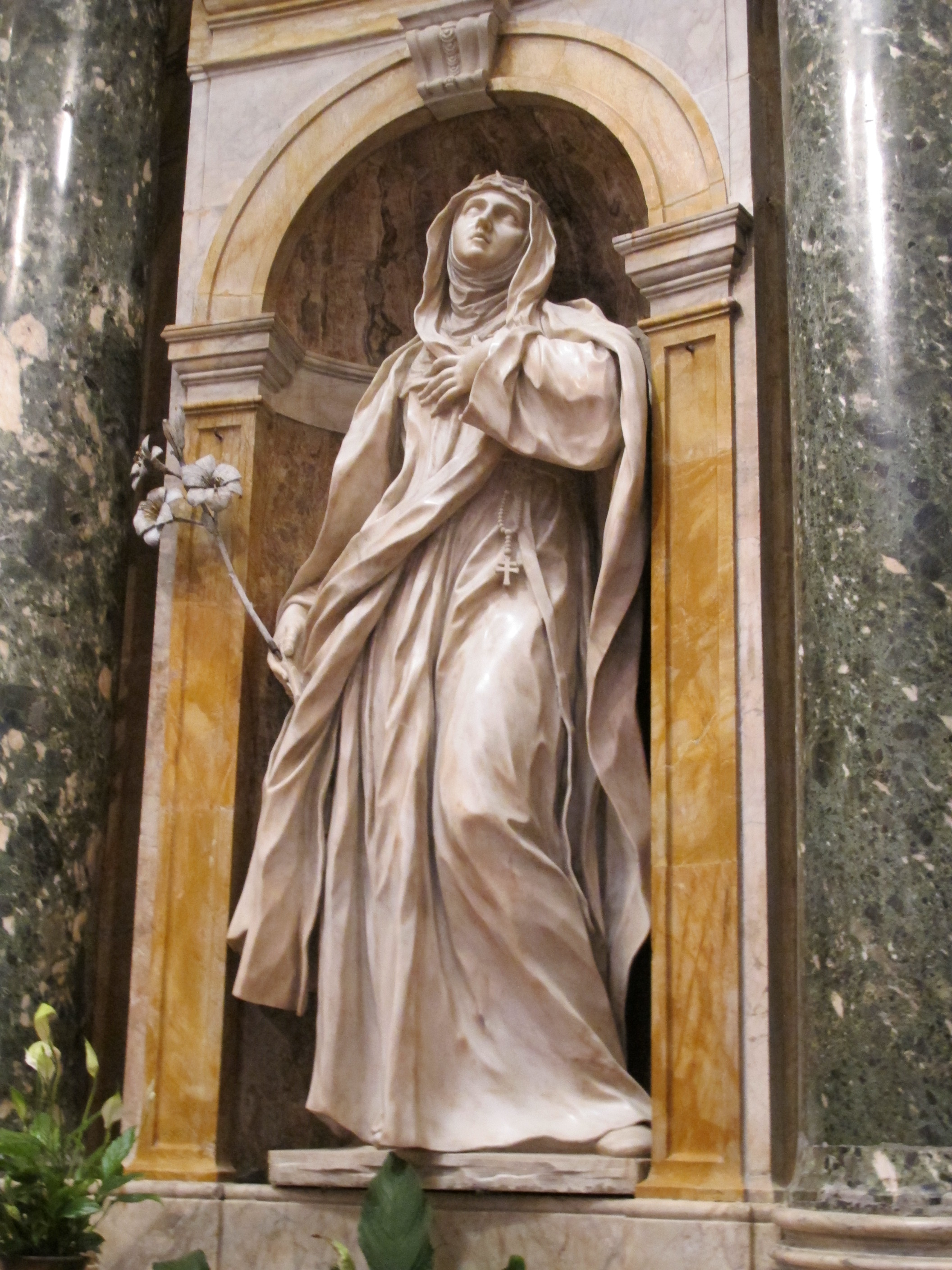THE MESSAGE
Onde dalla superbia nasce l’amore proprio, e dall’amore proprio la superbia; perchè subito che l’uomo s’ama di cosifatto amore, presume di sè medesimo, e li frutti suoi generano tutti morte, togliendo la vita della Grazia nell’anima che li possiedeL’amore proprio è miserabile, e partesi dalla giustizia, e commette le ingiustizie, e ha uno timore servile, che non gli lassa fare giustamente quello che debbe, o per lusinghe o per timore di non perdere lo stato suo
In a vision that remained indelibly impressed on her heart and mind, the Virgin Mary presented her to Jesus, who gave her a splendid ring, saying to her, “I, your Creator and Savior, wed you in the faith, which you will preserve ever pure until you celebrate your eternal marriage with me in heaven” (Raymond of Capua, Saint Catherine of Siena, Legenda major, no. 115, Siena 1998). This ring was and remained visible only to her. In this extraordinary episode we grasp the vital center of Catherine’s religious sense and of every authentic spirituality: Christocentrism. For her, Christ is like a husband, with whom there is a relationship of intimacy, communion, and fidelity. He is the good loved above every other good.
This profound union with the Lord is illustrated by another episode from the life of this illustrious mystic: the exchange of hearts. According to Raimondo da Capua, who recorded what Catherine told him in confidence, the Lord Jesus appeared to her holding a bright red human heart in His hand. He opened her chest, inserted the heart, and said to her, “Dearest daughter, just as the other day I took your heart which you offered me, I now give you mine, and from now on it will stay in the place where yours was” (ibid.). Catherine truly lived the words of Saint Paul, “It is not I who live, but Christ lives in me” (Gal 2:20).
Around a personality so strong and authentic, a real spiritual family was taking shape. These were persons fascinated by the moral authoritativeness of this young woman living life on a very high level, and who were sometimes impressed also by the mystical phenomena they were seeing, such as her frequent ecstasies. Many put themselves at her service and above all considered it a privilege to be guided spiritually by Catherine. They called her “Mama,” because as spiritual children they drew from her the nourishment of their spirit.
“I declare you and call you son,” wrote Catherine to one of her spiritual children, the Carthusian monk Giovanni Sabatini, “because I give birth to you through constant prayers and desire before God, just as a mother gives birth to a child” (Letter no. 141, to Father Giovanni de’ Sabbatini). She habitually addressed the Dominican friar Bartolomeo de Dominici with these words: “Beloved and dearest brother and son in sweet Christ Jesus.”
Another trait of Catherine’s spirituality is connected with the gift of tears. Tears express an exquisite, profound sensitivity, a capacity for tenderness and emotion. A great many saints have had the gift of tears, renewing the emotion expressed by Jesus Himself, who did not hold back or hide His weeping at the tomb of His friend Lazarus and the grief of Mary and Martha, or at the sight of Jerusalem during His last days on earth. According to Catherine, the tears of the saints mix together with Blood of Christ, about whom she spoke in vibrant tones and with highly effective symbolic images: “Keep the memory of Christ crucified, God and man… Take Christ crucified as your goal, hide yourselves in the wounds of Christ crucified, drown yourselves in the blood of Christ crucified” (Letter no. 16, To one whose name is withheld).
Here we can understand why Catherine, even though aware of the human failings of priests, always felt a great reverence towards them: because they dispense, through the sacraments and the Word, the saving grace of the Blood of Christ.
The Saint from Siena always urged the holy ministers, even the Pope, whom she called “sweet Christ on earth,” to be faithful to their responsibilities, moved to do this always and only by her deep, constant love for the Church. Before she died she said, “Taking leave of my body I, in truth, have spent and given my life in the Church and for the Holy Church, which is for me a great and unique grace” (Raymond of Capua, Saint Catherine of Siena, Legenda major, no. 363).
Thus from Saint Catherine we learn the most sublime knowledge: to know and love Jesus Christ and His Church. In the Dialogue on Divine Providence she, using an unusual image, describes Christ as a bridge between heaven and earth. It is made of three steps, formed by Jesus’ feet, side, and mouth. Rising by way of these three steps, the soul passes through the three stages of every path to sanctification: detachment from sin, the practice of virtue and love, and sweet, affectionate union with God






